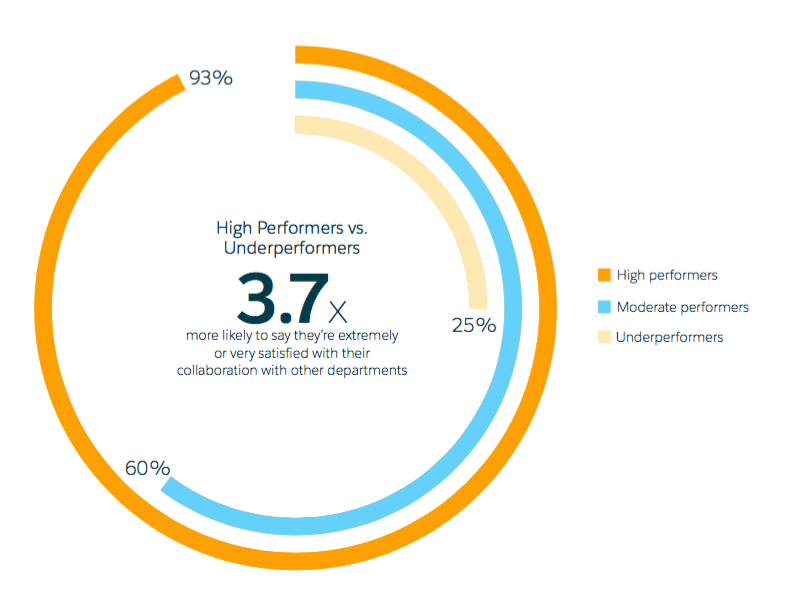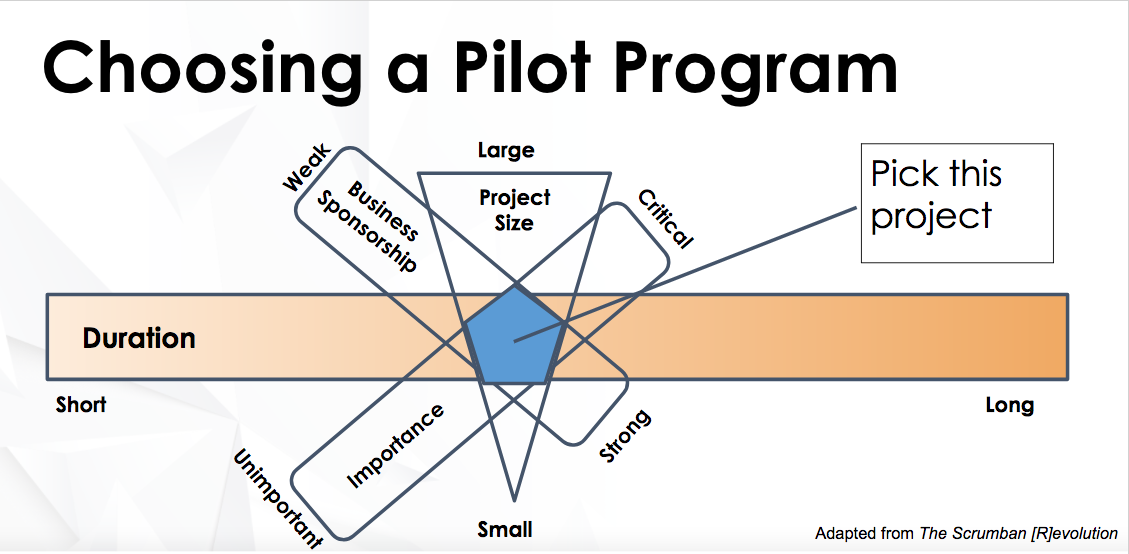When I first discovered Agile marketing, I was the lone content marketer in my department. From writing blog posts to developing content strategy to wordsmithing the website—I did it all.
Like many marketers, I spent a lot of my time stressing about my workload and its attendant deadlines (and, of course, trying to figure out how to get out of meetings).
For me, Agile marketing was like a gift from the work gods.
It made instant sense, and I could see how it would alleviate so many of the problems that were making my awesome job much less awesome.
Of course, convincing myself that Agile would work was the easy part. It addressed my day-to-day concerns; I could easily see how it would immediately make my job easier. Persuading my boss (and his boss) that we should fundamentally change the way we managed our work was a whole different ballgame.
If you’re hoping to convince your boss to transition to Agile marketing, I want to offer five ways to tackle the pitch process that I wish I’d known about during my earliest days of Agile evangelism.
Try one or try them all, and you can make a strong case for going Agile.
Pick a Problem Metric
Every department has them—those numbers that don’t ever quite measure up to your goals no matter what you try. Maybe it’s MQLs, blog subscribers, or social media engagement.
Whatever data point is troubling your boss, make it the focal point of your Agile proposal.
Recent research from Aprimo and Forbes showed that senior marketers saw improvement in their marketing metrics and KPIs when they used an Agile approach.
This data point alone may be enough to tip the scales in your favor. But if not, think about how you could design a small experiment an Agile team might be able to run. Let’s say your blog subscriber count is struggling. You could use some small, rapid Agile iterations to try several different lead magnets and see which one is most successful.
The winner of this round could go on to be the subject of amplification experiments, and then you could try using it with guest posting or paid advertising, too.
The point here is twofold:
- The adoption of Agile marketing alone is likely to bring an uptick in marketing metrics.
- Deliberately applying Agile practices to your most problematic KPI can deliver even more serious improvements in a relatively short amount of time.
Call out the Need for Collaboration
If this specific pain point isn’t applicable, think about more systemic problems facing your marketing team. It’s likely that interdepartmental collaboration is high on that list.
Getting collaboration right is hard, but it’s also crucial to success.
The recent State of Marketing report from SalesForce revealed that high-performing marketers are 3.7 times more likely to say they’re “extremely satisfied” or “very satisfied” with their collaboration with other departments.

This may sound like it falls squarely in the “easier said than done” category, but Agile once again holds the key.
The most recent State of Agile survey conducted by VersionOne revealed that 84% of Agile teams enjoyed improved project visibility and 77% were better aligned with the larger business.
It’s clear that the emphasis on visibility and communication allows Agile teams to enjoy much higher degrees of collaboration and alignment than traditional teams. By clearly documenting their workflow and then making it publicly available, marketing can show what they’re doing and how it’s impacting the rest of the organization.
Again we have a win-win situation. We get to escape awkward lunchroom conversations trying to answer, “What is marketing doing right now anyway?” while also making strides towards the group of top performing marketing teams.
Remember That Time We Had to Pivot (Again)?
Marketing is often at the leading edge of a company-wide shift in priorities, also known as the pivot. If you’re looking for a place to hide right now, you’re certainly not alone. Pivoting can be stressful, disrupting, and, if not handled well, counterproductive.

If your boss is expected to change gears at the drop of a hat, they may hug you when you introduce them to Agile marketing, because a whopping 93% of Agile CMOs say adopting Agile helped them switch gears more quickly and effectively.
What’s more, 80% say it helps them prioritize the things that matter. So by using an Agile approach, we’re adapting faster while also zeroing in on the most important work. That means we shouldn’t have to pivot as often because we’re doing what makes the biggest impact on the bottom line.
More Work, Less Time—It’s That Simple
“We have more resources and more budget than we could ever use!”
– No Marketer Ever
Marketing teams of all sizes struggle with time and resource limitations. Top performers figure out how to do more with less.
The best way to make this happen consistently? You’ve probably guessed, it’s Agile marketing.
In the earliest days of Agile software development, groups would see their output increase by 300% or more following an Agile transformation. Even now, over a decade and a half after the original Agile Manifesto was drafted, 85% of the teams in software and IT that use Agile say it increases their team productivity.
Marketers enjoy similar effects, with Agile marketing leaders breaking down the benefits into more projects completed on budget (26%), more projects completed on time (28%), and more efficient marketing iterations (21%) among the benefits their teams have seen.
With stats like these behind you, leading off your Agile marketing pitch by asking if your boss would like the team do more work in less time is never a bad way to start.
Suggest an Agile Pilot
Even if your boss is intrigued by some of these numbers, “going Agile” can sound like an overwhelming item to add to the to-do list. Help break it down into manageable steps by suggesting the team start with an Agile pilot.
Pilot programs involve breaking off a small subset of the work that a team typically handles and executing it using an Agile approach
This might mean that 4-5 committed team members set up an Agile team and work on a finite project, or it might mean the whole department organizes a subset of their work (content marketing, for example) using Agile.
Both options let marketers get their feet wet and try things out in a low-risk setting. You’ll learn a lot in a short amount of time, and when the time comes to expand Agile to a larger team or a larger portion of the work, you’ll get the benefits you’re after much more quickly.

Agile Benefits Everyone in Marketing
From individual content creators to VPs and CMOs, everybody wins when marketing goes Agile.
What’s more, Agile marketing is a very safe bet.
According to VersionOne’s data, 98% of their respondents (who number in the thousands and come from companies of all sizes around the world) realized success with their Agile projects.
At this point Agile marketing isn’t just a low-risk experiment, it’s practically a slam dunk.
Feel free to use that line when talking to your boss.


